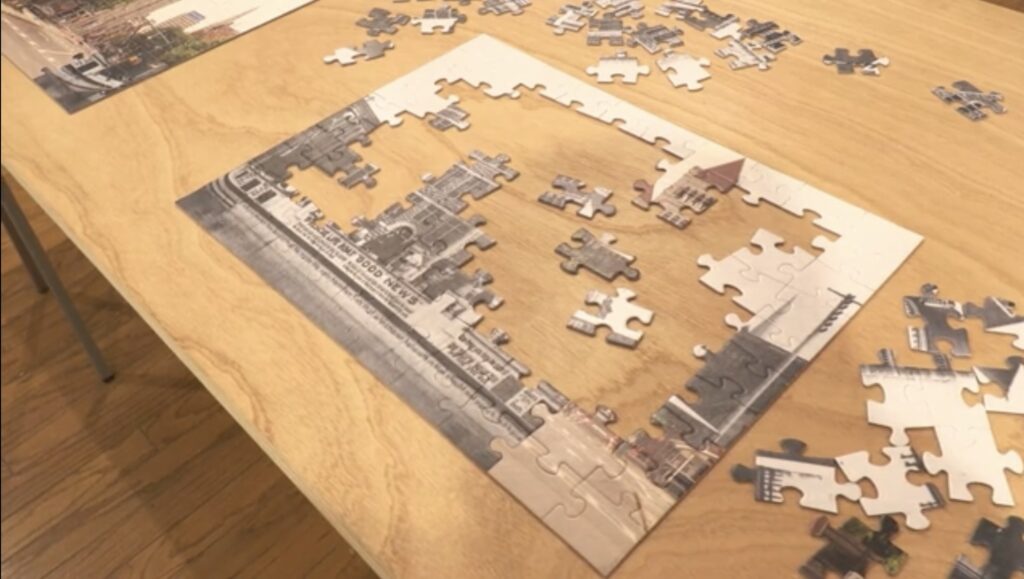
SYRACUSE, N.Y. (NCC News) — Two hundred years ago, the Seneca Chief boat made the maiden voyage from Buffalo to New York City, which officially marked the completion of the Erie Canal. Now, modern-day Central New York is celebrating the bicentennial anniversary of the Erie Canal.
The Erie Canal was the lifeblood of economic growth in Central New York. When it was completed in 1825, it connected New York City and Buffalo, paving the way for the development of the New York community.
The Erie Canal ran right through Clinton Square and was located on what is now Erie Boulevard in downtown Syracuse. The canal had a large impact on shaping what Syracuse is today, according to the Director of Education at the Erie Canal Museum, Derrick Pratt.
“Right here, Syracuse went, in about a decade, from only having 250 people living here when the canal first opened,” Pratt said. “By the end of the century, 100,000 people would live here.”
VIDEO TRANSCRIPT:
(Reporter: Andrew Watson) This year the Central New York community is celebrating the 200th anniversary of the Erie Canal’s completion. Although the Canal’s uses have shifted away from shipping and transportation, 80 percent of the Central New York community still live within 25 miles of the modern-day canal. Derrick Pratt, who is the Director of Education at the Erie Canal Museum believes that the Erie Canal still thrives in modern day through recreational activities.
(Derrick Pratt) You also have the empire state trail, which runs parallel to the Erie Canal and just last year about four million people traveled on it. So there are tons of tourists and tourist dollars that are impacting our community.
(Reporter: Andrew Watson) The Erie Canal Museum has been busy creating a variety of activities to celebrate the history of the canal, and to educate the local community on how it shaped Central New York into what we know today. From lecture series, to skill share workshops, the museum hopes to build community resilience for the canal, culminating in October.
(Derrick Pratt) In October, the Seneca Chief, a full sized recreated canal boat, will be going from Buffalo to New York City, recreating the first ever canal voyage 200 years ago. And that will be stopping here in the first weekend of October.
(Reporter: Andrew Watson) While the Erie Canal Museum has big plans for the 200th anniversary, the Everson Museum of art is currently hosting “at waters edge: a reflection on 200 years of the Erie Canal. Which features three artists-in-residence that try to encapsulate what the Erie Canal means to the community, in photos.
(Steph Adams) They all take the canal as a jumping off point obviously but then the photographs visually and thematically are very different.
(Reporter: Andrew Watson) Although each artist took a different approach in the year-long project the main goal of the exhibit is to teach the history of the Erie Canal in a non-traditional way.
(Steph Adams) I hope that going to see the exhibit makes people a little more interested in local history. And they see through art, it’s not just reading a textbook or something like that.
(Reporter: Andrew Watson) From nature scenes to faces of the canal, and inkjet photographs that combine modern-day scenes with the historical photos of towns along the Erie Canal, the exhibit explores the history through three different lenses. The “At Water’s Edge” exhibition runs through April 27th. Andrew Watson, N-C-C News.
After the final regularly scheduled hauler stopped service in the early 1990s, the Central New York community found new uses for the canal. Pratt said the modern canal has transformed into a tourist hub for recreational activities.
“You have The Empire State Trail, which runs parallel to the Erie Canal. Just last year about four million people traveled on it,” Pratt said.
Pratt said that even though the Erie Canal’s objective has changed, recreational activities and tourism still impact economic growth in Central New York.
The Erie Canal Museum and the Everson Museum of Art have organized events to celebrate what the canal has meant to the community over the past 200 years. The Erie Canal Museum is planning to expand its usual lecture series with speakers to help build community interest for the Erie Canal.
“We also have skill share workshops, where we are teaching people various skills that would have been relevant in the past on the canal and in the present,” Pratt said.
These events will culminate in one final celebration in October, when a full-size portrayal of the Seneca Chief canal boat will recreate its initial voyage along the Erie Canal. The canal boat will leave Buffalo and make a stop in Syracuse in early October, before arriving in New York City later that month.

The Everson Museum of Art is currently hosting “At Water’s Edge: A Reflection on 200 years of the Erie Canal,” which includes photos of three different artists-in-residence. Alon Koppel, Judit German-Heins, and Clara Riedlinger had different approaches to feature the canal.
“They all take the canal as a jumping-off point,” said Steph Adams, who curated the exhibition.. “But then, the photographs visually and thematically are very different. I think it works to give someone that might not be familiar with the canal a wholesome introduction.”
The exhibit features the modern faces of the canal and images of the modern-day uses of the canal and its connection to nature. The exhibition also includes inkjet photographs by Alon Koppel that combine the historical pictures of the canal with modern-day images.
Koppel also turned one of these inkjet photographs into a puzzle, which creates a hands-on experience for visitors to the gallery. Adams hopes that the exhibit offers a new way for the community to learn about the history of the canal.
“I hope that going to see the exhibit makes people a little more interested in local history. And they see through art, it’s not just reading a textbook or something like that,” Adams said.
The Everson Museum of Art is hosting a reception on Feb. 15, to celebrate the artists, and the exhibit runs until April 27 in downtown Syracuse.

